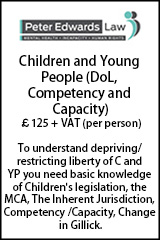Transforming the way we produce population statistics
- Details
Jen Woolford explains how the ONS is using a variety of data sources to provide more frequent, inclusive, and timely statistics to allow us to understand population change in local areas this year and beyond.
The census gives us a brilliant, detailed snapshot of England and Wales, but since census day the world has continued to change. People move home, change jobs, some will have left the country while others will have arrived. Reflecting these ongoing changes, Jen Woolford explains how the ONS is using a variety of data sources to provide more frequent, inclusive, and timely statistics to allow us to understand population change in local areas this year and beyond.
Last month, the Office for National Statistics produced the first headline estimates from Census 2021. They are the first of some five billion statistics which will be published from the census over the coming two years, and they are crucial for the planning of public services, such as the number of hospital beds, school places, roads and so much more. They give us a fantastic opportunity to understand the population and its characteristics during the coronavirus (COVID-19) pandemic, and a baseline from which to monitor change as we go forward.
However, while the census provides the best picture of society at a moment in time, there is a need for more timely and frequent statistics that enable us to understand our population and how it changes on an on-going basis. The ONS has been clear on this direction of travel for some time and today announces its ambition for a new Dynamic Population Model building on our earlier research to develop admin-based population estimates (ABPEs). This sets a clear path for the future of population statistics to produce timely population estimates at national and local authority level.
How will it work?
The Dynamic Population Model (DPM) allows us to observe and reflect changes in demographic behaviour, during a time when we know that society is rapidly changing, as we emerge from the pandemic.
The DPM will use a combination of historical time series data and real-time insights to produce timely estimates that should be treated as provisional. These estimates will then be revised, replacing projected data with up-to-date data once they become available. This is similar to the approach we use to produce gross domestic product (GDP), where early estimates are provided and then are later revised as more data become available. By independently producing stocks, flows and demographic trends, it should reduce the gradual drift we currently see from census population estimates. A further advantage is that the estimates of population and population change (births, deaths, and migration) will be fully coherent, where previously we have cautioned against comparing population stocks and flows.
The DPM uses a range of data sources to measure population counts, such as census estimates, NHS patient registers and the components of population change, including births and deaths.
Another key element are the admin-based population estimates (ABPEs) which we will now refer to as Statistical Population datasets (SPDs). This reflects that they are no longer seen as a finished estimate but will feed into the DPM where the estimation is carried out. This means we can use the benefits of the SPDs with their inherent uncertainty alongside other data inputs to estimate the population.
The DPM also requires information on the other component of population change – migration. Net changes from international migration, internal migration and flows across the border with Scotland and Northern Ireland all go into the model. Therefore, to feed into the DPM, estimates of international migration are required with the same degree of timeliness, frequency, and granularity.
Transforming migration statistics
It has long been acknowledged that the International Passenger Survey (IPS) which underpinned our previous international migration estimates was stretched beyond its original purpose. In previous blogs we have outlined our progress towards using administrative based migration estimates (ABMEs) to provide crucial insight. Today, we have published an article explaining our programme of work to deliver migration estimates required by users and to produce future population estimates.
It outlines the need to make the best use of the data available to us to understand EU, non-EU and British migration patterns. The bedrock for ABMEs will be Home Office (HO) data, the Department for Work and Pensions Registration and Population Interaction Database (RAPID), with Higher Education Statistics Agency data to account for students missing in RAPID. We’ll also ensure our estimates and methods feed into wider research on total population estimates.
Our plan is to publish migration estimates for the year ending June 2022 in November this year. These will then be used for our ‘research’ DPM population estimates which we’re aiming to publish this coming winter.
That’s not all…
The census allows us to ‘rebase’ our regular ‘mid-year’ estimates for the size of the population. In autumn 2022, we aim to publish annual mid-2021 population estimates which are based on the census and updated to take account of the births, deaths and estimated migration that has taken place during the three months between census day and the mid-year point of 2021.
From October we’re also publishing the next batch of census statistics, the topic summaries, covering:
- Demography and Migration
- Ethnicity, National Identity, Language and Religion
- UK Armed Forces Veterans
- Housing
- Labour Market and Travel to Work
- Sexual Orientation and Gender Identity
- Education
- Health and Care
Keep an eye on our release plans for the latest publication dates.
We look forward to continuing to listen to users and stakeholders to get their feedback on our plans and research. This feedback, alongside our research over the next year, will provide evidence to support the National Statistician’s recommendation on the future of population statistics in late 2023.
Please click here to view the original article.
Jen Woolford is Director of Health, Population and Methods Transformation.
Legal Director - Government and Public Sector
Principal Lawyer - Planning, Property & Contract
Contracts Lawyer
Lawyer (Planning and Regulatory)
Governance Lawyer
Antisocial Behaviour Legal Officer
Regulatory/Litigation Lawyer
Legal Adviser
Senior Lawyer - Planning, Property & Contracts Team
Solicitor/Lawyer (Contracts and Procurement)
Deputy Director Legal and Democratic Services
Locum roles
 Masterclass – MCA and Court of Protection - Legal Update - Peter Edwards Law Training
Masterclass – MCA and Court of Protection - Legal Update - Peter Edwards Law Training
21-01-2026
Online (live)
 Managing settlements: the legal and practical issues, and the pitfalls to avoid - Blake Morgan
Managing settlements: the legal and practical issues, and the pitfalls to avoid - Blake Morgan
22-01-2026 10:00 am
Online (live)
 Children and Young People (DoL, Competency and Capacity) - Peter Edwards Law Training
Children and Young People (DoL, Competency and Capacity) - Peter Edwards Law Training
28-01-2026
Online (live)
 HMPL Building Blocks: Legal Tools to Combat Anti-Social Behaviour - Devonshires
HMPL Building Blocks: Legal Tools to Combat Anti-Social Behaviour - Devonshires
17-02-2026
Online (live)
 Freedom of thought, belief and religion: Article 9 ECHR - Francis Taylor Building
Freedom of thought, belief and religion: Article 9 ECHR - Francis Taylor Building
19-02-2026
Online (live)
 Grappling with S73 - variations of conditions applications or appeals - Ivy Legal
Grappling with S73 - variations of conditions applications or appeals - Ivy Legal
09-03-2026
Online (live)
 HMPL Building Blocks: Tenancy Management – Assignment, Mutual Exchange and Succession - Devonshires
HMPL Building Blocks: Tenancy Management – Assignment, Mutual Exchange and Succession - Devonshires
12-03-2026
Online (live)
 Section 31(2A) Senior Courts Act: where have we got to? - Francis Taylor Building
Section 31(2A) Senior Courts Act: where have we got to? - Francis Taylor Building
18-03-2026 1:00 pm
Online (live)
 Save the Date: The Law of Public Rights of Way, Commons and Town or Village Greens Seminar (Hybrid) - Francis Taylor Building
Save the Date: The Law of Public Rights of Way, Commons and Town or Village Greens Seminar (Hybrid) - Francis Taylor Building
25-03-2026
London
 HMPL Building Blocks: A Housing Officer’s Guide to Court Proceedings - Devonshires
HMPL Building Blocks: A Housing Officer’s Guide to Court Proceedings - Devonshires
14-04-2026
Online (live)


































































































































 First Aid Level 3 - LBL Skills
First Aid Level 3 - LBL Skills  Capsticks Housing Diploma
Capsticks Housing Diploma  Standish 18 months on - 42BR
Standish 18 months on - 42BR  Accelerating EV Charging Infrastructure in the Public Sector - DWF
Accelerating EV Charging Infrastructure in the Public Sector - DWF  Building Safety Act Conference 2026 - Landmark Chambers
Building Safety Act Conference 2026 - Landmark Chambers  Education Law Conference - 3PB
Education Law Conference - 3PB  Annual Planning Seminar 2026 - No.5 Barristers
Annual Planning Seminar 2026 - No.5 Barristers 